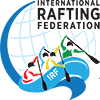Welcome to the IRF Guide Training & Education (GTE) Award System
IRF GTE history & development spans two decades whereby the system is the only globally recognised raft guide certification. The system was developed in response to the demands of rafting guides, river tour companies and river regulatory authorities. From across the globe, they sought to establish universal minimum standards for river guides and instructors.
IRF as recognised body, and basic intentions of the system
As the recognised body that oversees rafting activities worldwide, the IRF was selected to establish these standards. A GTE committee was created and the advice and help of expert guides, instructors and industry leaders from around the world was solicited to determine what should be included in the standards and how the system should be administered and accredited. The basic intentions of the system are to provide a means of recognising guides, trip leaders and instructors that meet or exceed internationally accepted standards. The certification awards have been designed to complement existing requirements, regulations and laws worldwide by giving a structure to their common elements. Additionally, the system is intended to provide an internationally recognised structure for the professional development of river guides and instructors.
Recognition and acceptance
The IRF GTE Certification Award is recognised and accepted around the world as proof of whitewater guiding competency, and in some countries it has been adapted as a national standard and requirement. The IRF is recognised by the two largest tourism bodies in the world – the Adventure Travel Trade Association (ATTA) and the United Nations World Tourism Organisation (UNWTO). This recognition is as the world body responsible for establishing and administering commercial raft guide standards.
In all cases, the IRF GTE Certification Award serves as an acceptable proof of guide or instructor knowledge and skills when a regional or nationally issued certification is not required. For guides who wish to travel and work on rivers outside of their own country, the IRF GTE Certification Award is often the only certification they will need. Some countries may still require a guide to obtain a national or regionally issued certification as well.
History of the system’s development
In September 1998 the GTE committee took on the relatively straightforward task of defining the basic requirements for rafting guides and instructors. Over time and through constant interaction these have become widely and generally accepted worldwide. Once defined, these requirements were intended to provide the basis for:
- recommendations on the training and recognition of guides and instructors for all those that are involved in or have an impact on the industry, particularly government regulators, and
- a system by which guides could be recognised worldwide.
The first documents were drafted and globally circulated for comment to guides and instructors. In August 1999 these drafts were further reviewed and discussed at a formal workshop. After debate and revisions, final versions were agreed upon and the resulting documents, subject to periodic review, were published. Links to the current versions of these documents are found here.
Considering the worldwide trend towards the regulation of adventure activities, including rafting, the formulation of recommendations was considered both timely and necessary if the drafting of inappropriate regulation (which already exists in some countries) was to be avoided. Additionally, many guides would benefit from holding an internationally recognised certification for having satisfied internationally accepted norms.
Around the same time, the first group of IRF Assessors and Instructors were qualified according to the newly finalised system requirements. Within the system, GTE Instructors are responsible for examining candidates for the Guide and the Trip Leader certification awards, and GTE Assessors are responsible for examining new Instructor candidates as well as all other candidates.
Looking ahead
Following reviews, in 2016 the system went through some major upgrades. The system continues to experience growth and wide acceptance as it becomes better known and as IRF Instructors and Assessors bring it to new locations. A list of current IRF Certified Guides, Trip Leaders, Instructors and Assessors can be found here.
Further information on the IRF GTE Certification Award, and how you to obtain the certification for yourself or guides under your employ, can be found here.
A listing of upcoming GTE examinations and workshops can be found here.
System updates
The Certification System was updated in July 2005, May 2007, December 2009, and April 2016.
The main changes of 2007 were the creation of the entry level awards “Trainee Guide” and “Class 2 Guide”.
In 2009 at the GTE meeting held in Bosnia at the World Rafting Championships, two new certifications were introduced:
- “Inline-Raft”, which sets assessment standards for guides who work with inflatable kayaks and canoes, and similar craft; and
- “Safety Crafter”, which sets assessment standards for guides who provide safety on a commercial trip using oar powered rafts, kayaks or other craft that are not carrying passengers for hire
These modifications to the system were finalised by the GTE Committee in December 2009.
In April 2016 at the GTE Conference held in Austria, and during subsequent GTE Committee discussions, major revisions were made to the system.
- the system was renamed the “GTE Award System” and changes were introduced to improve on administrative oversight, award requirements, and system structure
- ‘Class’ was renamed to ‘Level’ to avoid confusion with the river classification system. Revisions include the separation of the Class 4/5 certification into a Level 4 and Level 5 certification
- certifications were revised to be valid for 3 years
- “Safety Crafter” designation was divided into separate designations “Safety Raft” and “Safety Kayak”
- the term “training modules” was introduced to refer to GTE workshop training (Safety, In-line Raft, etc) that is not specific to Raft Guiding or Instruction
- “Site Specific” and “Provisional” status designations were created, and
- the “Trainee Guide” level was eliminated and rolled in to the “Provisional” status designation
In July 2021 the system and supporting documents were updated to reflect current industry practice and standards and to launch the Whitewater Guide Award. The Whitewater Guide Award replaces the Inline Raft Guide whilst also expanding the remit of the award.







